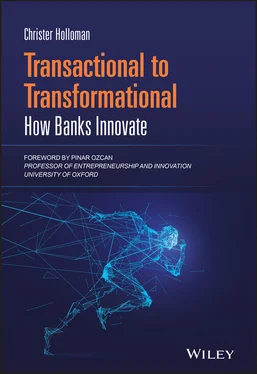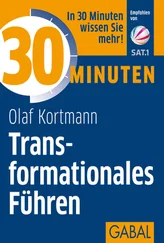Finally, we must mention the buzz word, open banking, if we are to discuss innovation in banking. Open banking is a set of regulations that has been positioned as the catalyst for reinvention within the banking sector. Starting with the UK and EU in 2018, versions of open banking regulation are spreading fast around the world, with noteworthy examples in Australia, Brazil, Canada, India and Singapore. In a nutshell, open banking facilitates competition by mandating incumbent banks to produce open access to valuable current account and other financial data via application programming interfaces (APIs) to trusted third party providers. In other words, it gives customers control over their financial data and allows data‐driven new entrants to access the data they need in order to compete with big banks. Open banking has spurred competition to big banks, not only from small innovative fintechs but also from BigTech. Using the new regulations to access customers' bank data, the likes of Amazon, Google and Facebook are taking big strides into banking as I write this. Examples include Amazon's extension of credit to businesses on its platform via Amazon Lending, Facebook's aggressive implementation of P2P payments into its social platform and Google's announcement of basic banking (e.g. checking account) services starting in the US in 2021.
Against this backdrop, Christer Holloman's book on how banks innovate is both important and timely. Banks need to innovate in order to stay alive. However, it is not necessarily easy for them to do so given their legacy systems and safety‐focused culture. In this book, Christer provides an array of innovation efforts by top banks around the world. What I find particularly noteworthy here is the honest approach to the problems faced by these vast institutions. There is no magic pill for banks to become data‐driven technology organisations overnight; innovation takes constant effort and change in management. For those organisations that are at the start of this journey, Christer's book provides an open buffet of innovation efforts from the industry to consider and implement. These insights are not only valuable to other banks that are realising the need to start an aggressive innovation programme, but also to any big organisations that are being disrupted by data‐driven technology organisations.
Pinar Ozcan
Professor of Entrepreneurship & Innovation
Saïd Business School, University of Oxford
In 2016 Goldman launched the digital bank Marcus to diversify its revenue and funding sources by offering savings accounts and personal loans to retail customers. Within 6 months of launch they had signed up over 200,000 customers and taken in more than $6 billion in deposits. In 2019, after 3 years of preparation and a $250 million investment, Royal Bank of Scotland launched its digital bank called Bó. Six months later RBS declared the initiative a failure and closed it down.
Why is it that some banks are better at innovating than others?
That is the exact question I have been asking myself since 2014 when I founded Divido, a software platform today used by some of the largest banks in the world such as HSBC, BNP and ING to offer ‘Buy Now, Pay Later’ finance to retailers and consumers. As an SaaS platform, charging a transaction fee, I realised early on that we would only be successful if the banks were successful in launching and scaling this new proposition. The quicker the better. In addition to the clients of Divido, from which I have had the opportunity to learn best practices first hand, I have met with 100+ banks over the years and whenever I got the chance I would ask, ‘How do you innovate? What has worked, what has not, and why?’ What began as a quest to set my own business up for success has evolved into a repeatable blueprint that has been shared, used and validated by a diverse set of banks: big and small, long established and brand new, from the west and the east. It was when I was discussing these insights at a workshop with a bank last year that their CEO suggested I should write a book about how banks innovate.
Banks, like any business, need to defend and grow their market share. That can only happen through innovation, which for a lot of banks means moving away from being a processor of transactions. That said, just because a bank once did something innovative, it does not mean they are an innovative bank. Just because they churn out press releases announcing innovations, it does not mean the innovation was any good or that they are good at innovating. Several of the banks I have worked with to launch ‘Buy Now, Pay Later’ told me that it was their first new product at this scale in over 10 years. It is hard to get good at something when you do not do it very often. All the more reason to make sure you do your homework and prepare to make sure you get it right the first time when you do decide to innovate. For some bank executives, delivering an innovation can make or break their career. Even those who innovate more often say that everything tends to take longer than they like, costs more than they had budgeted for and the end result does not transform the bank or excite the end‐users. In conclusion, there seems to be room for improvement all around.
Through a series of case studies you are invited to meet and learn first‐hand from the people and teams that have delivered a number of very different innovations successfully across a diverse group of banks. Banks featured include: Bank of America, BBVA, Citi, Crédit Agricole, Danske Bank, Deutsche Bank, ING, J.P. Morgan, Lloyds Bank, Metro Bank, N26, National Australia Bank, Royal Bank of Canada, Santander, Standard Chartered and Swedbank.
If you are looking for a silver bullet, you have come to the wrong place. This book will, however, equip you with ideas, tools and actionable hands‐on advice to challenge, inform and validate your own thinking. You will learn how these particular banks delivered new solutions to consumers and businesses, products as well as services, across the spectrum of buy, build and partner. There is even a bonus section talking about changing ways of working, creating a better foundation for enabling innovation in the first place. The banks have been chosen based on their size, location and type of innovation to give you the broadest breadth of reference points.
Whilst a lot of care has been taken to ensure consistency in detail across all chapters, you will notice slight variations because different banks were comfortable sharing different information. I have done my best to tease out the learnings for you, but in cases where it is not as obvious, I challenge you to read between the lines. If you want to dig deeper into any specific case, there are over 100 hours of additional interview material that I could not fit in the book, so register on www.howbanksinnovate.comto access more material from the banks featured, with full‐length interviews and videos.
If you have a successful innovation case you think we should profile on our website and share with our community, get in touch via www.howbanksinnovate.com.
Christer Holloman
Part I Buy
Chapter 1 Lloyds Banking Group: Investing from the Balance Sheet
Case: Thought Machine

In 2018, Lloyds Banking Group (LBG) announced the next three‐year phase of their strategy, designed to set the group up for success in a digital world. In establishing the activities to deliver this strategy, they recognised the potential of investing in fintechs using their balance sheet to accelerate their own transformation and even to unlock new business model opportunities.
Читать дальше












